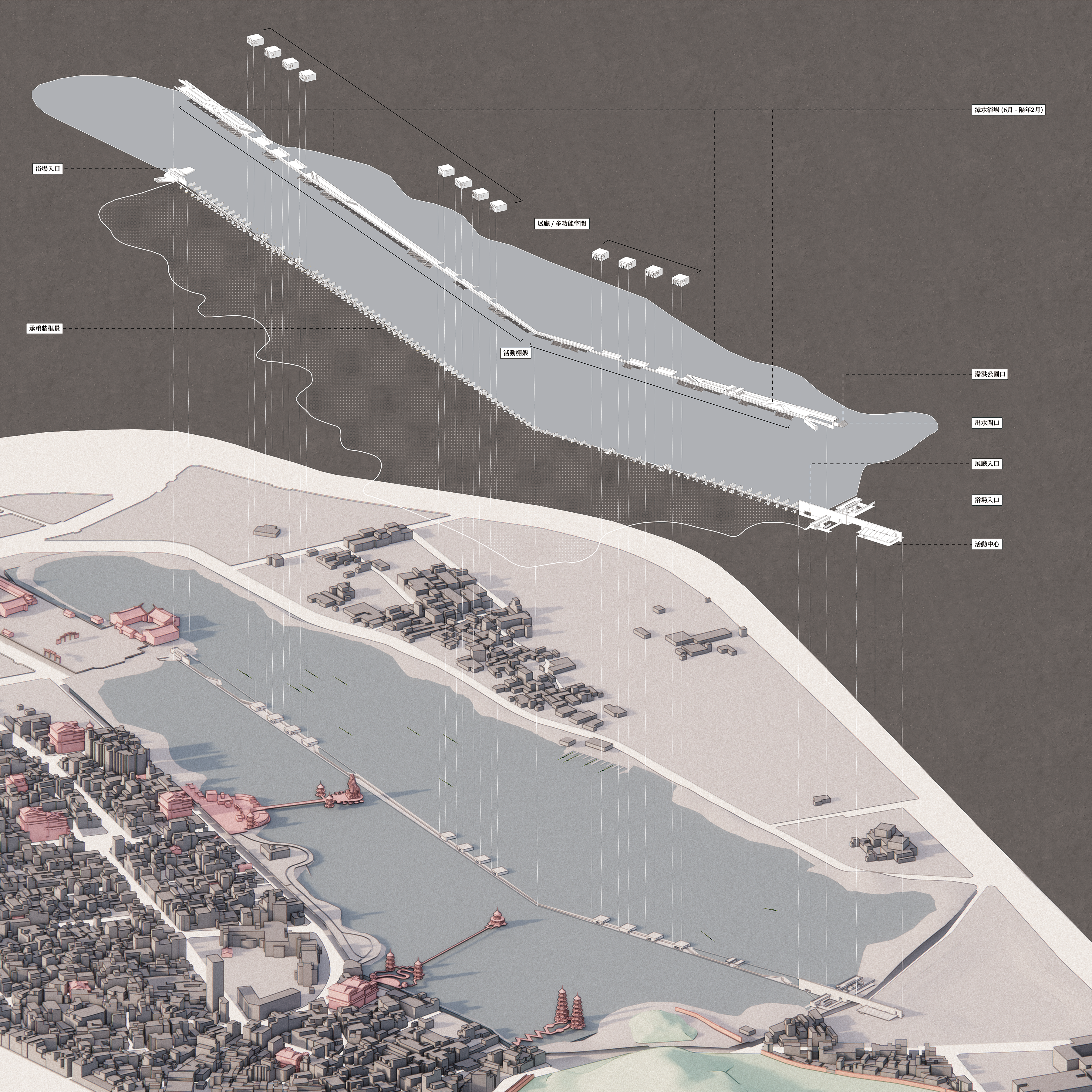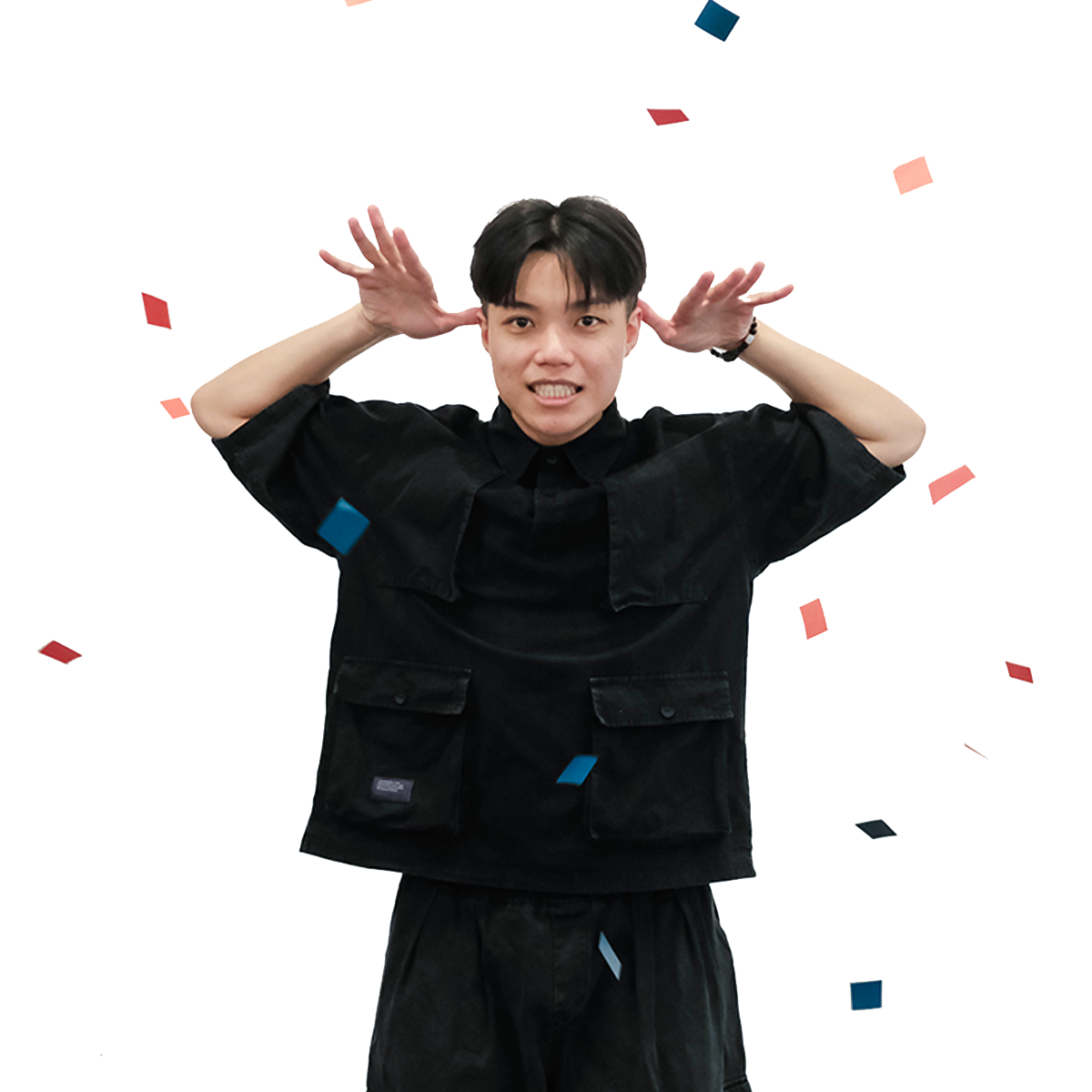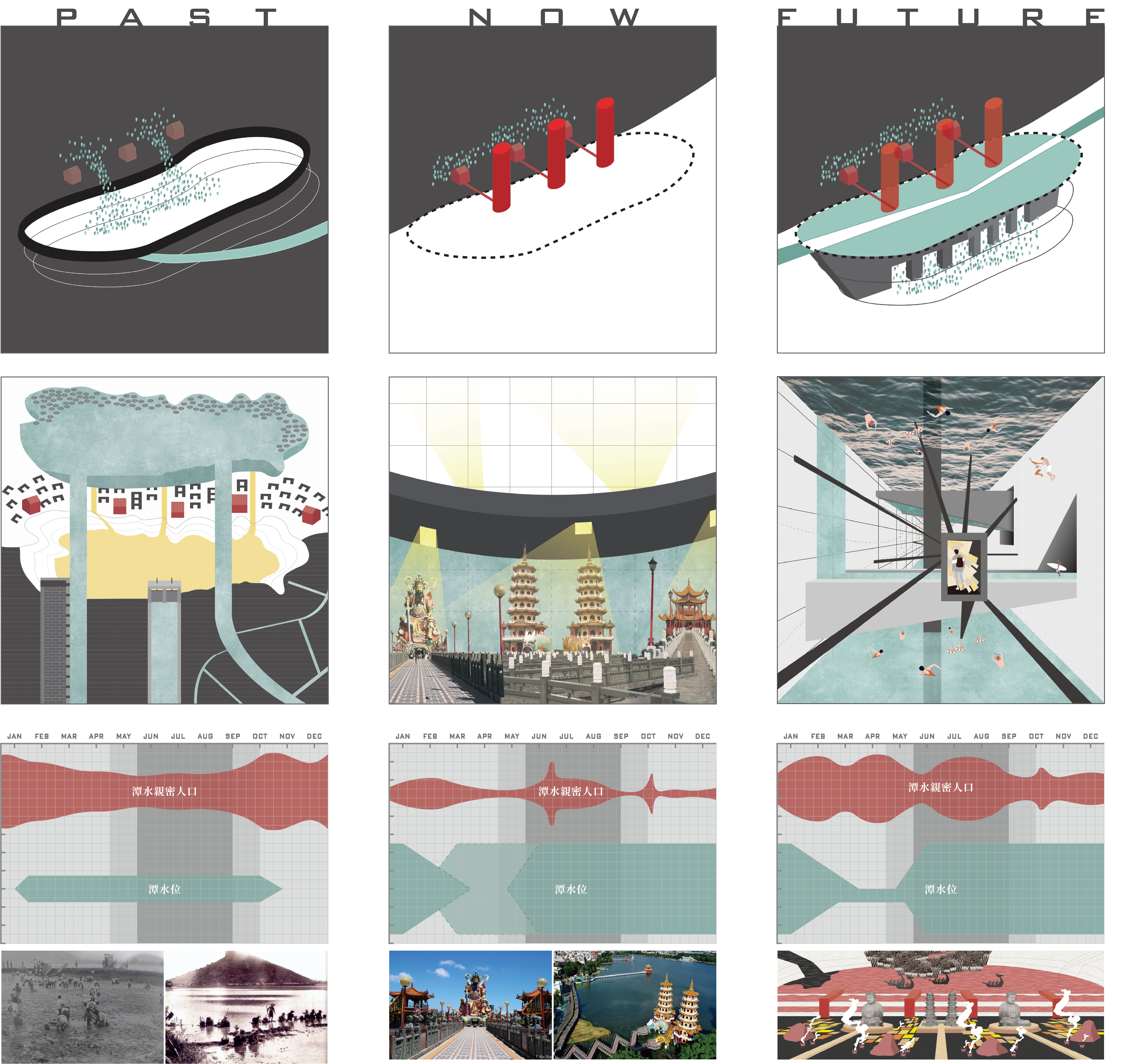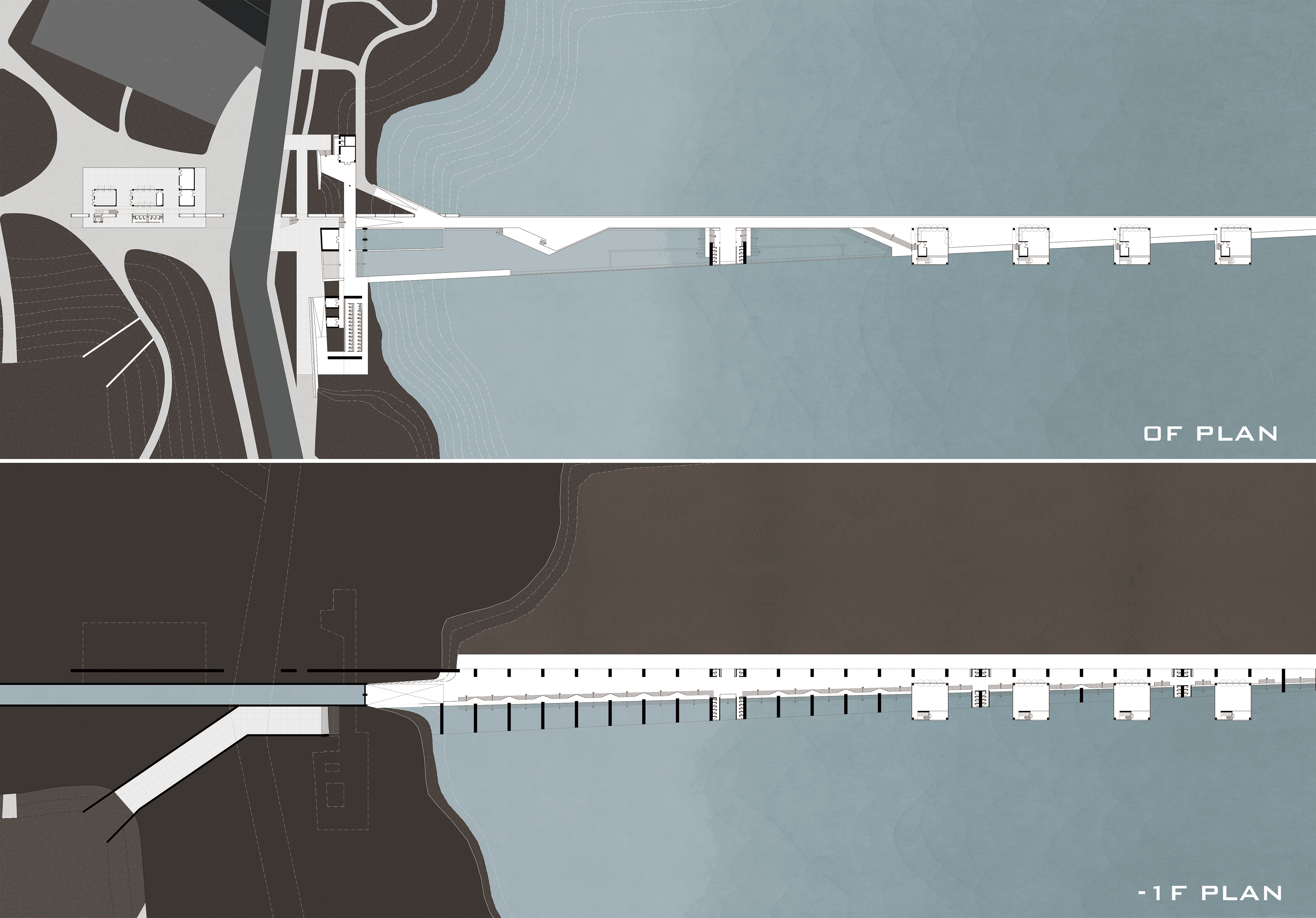遺流之界
Boundary of Water Reliction
陳映融


以地景中”地與人”的關係帶出的特質建構地方性。
設計說明
都市中的巨大水體如何在主體性與本質消逝的都市裡重新建立起當代人們對於水的想像。
基地
高雄市左營區蓮池潭
水的本質是無形的,所謂的水體是透過邊界的構成,展現水下而上積累的特質,以邊界之形揭露於地之上。
在水體與日常高度混合的蓮池潭,人與水體的關係對都市紋理的形塑皆在水的周遭留下深淺不一的刻痕,過往人的勞動與水的本質,藉由水的邊界揭露與結合,產生舊左營以「水」為邏輯的環境特質。
隨著需求轉變,三座矗立於潭水面的塔廟提供了視角構成的主次關係,產生了以景為邏輯的方式思考蓮池潭,潭水面上由塔廟構成的點取代了人與水的邊界,而邊界的消逝使水體在景的背後重回無形之水。
舊左營的活動皆以矗立的塔廟和巨大的水體為活動發生的背景幕,我想以一道永久性的邊界介入活動的背景之中,作為地景變動性永久的對照物,使無形的水重新以邊界之形揭露於地之上。
Site
Lianchi Lake, Zuoying District, Kaohsiung City
The essence of water is intangible. The so-called water body is composed of boundaries, showing the characteristics accumulated from underwater and upward, and is exposed on the ground in the shape of boundaries.
In Lotus Pond, where water and daily life are highly mixed, the relationship between people and water has shaped the urban texture, leaving marks of varying depths around the water. The labor of past people and the nature of water are reflected through the boundaries of the water. Exposure and combination create the environmental characteristics of Jiu Zuoying that are based on the logic of “water”.
As the needs changed, the three pagodas and temples standing on the surface of the pond provided a primary and secondary relationship of perspective, resulting in a logical way of thinking about the lotus pond. The points on the surface of the pond composed of pagodas and temples replaced people and water. The boundary disappears, and the disappearance of the boundary makes the water body return to invisible water behind the scene.
All the activities in Jiuzuoying use the towering pagoda temple and the huge water body as the background for the activities. I want to intervene in the background of the activities with a permanent boundary as a permanent contrast to the changing landscape, making the invisible Water is revealed again on the earth in the shape of a boundary.





